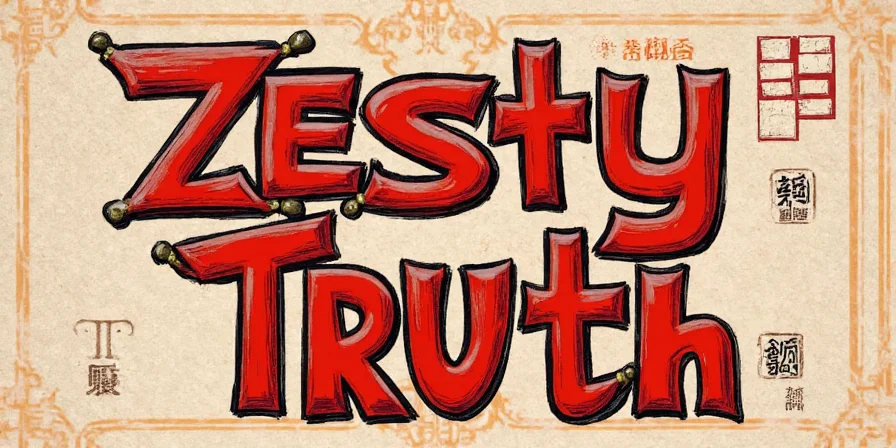The Zesty Truth: What Is Horseradish Made Of? (And Why It Slaps Your Senses!) 🥕👃🔥
Ever taken a whiff of horseradish and instantly felt like you've been hit by a spicy freight train? You're not alone. But behind that sinus-clearing punch lies a fascinating plant with a rich history, a unique chemistry, and some surprising culinary versatility. So grab your lab coat or apron — we’re diving into the root of the matter.
Table of Contents
- What Exactly Is Horseradish?
- Breaking Down the Heat: What's Inside That Root?
- A Historical Spice Journey
- Culinary Uses: From Sauces to Steaks
- Health Perks: More Than Just a Nose Clearer
- Storage Tips: Keep It Fresh Without Losing the Fire
- Spice Science: The Chemistry Behind the Burn
- Horseradish vs Wasabi vs Mustard: The Spicy Showdown
- Conclusion
🥕 What Exactly Is Horseradish?
Contrary to what some might believe, horseradish is neither a horse’s radish nor a mythical vegetable from the land of “Spicetopia.” It’s actually a root vegetable, scientifically known as Armoracia rusticana, belonging to the Brassicaceae family, which also includes mustard, wasabi, broccoli, and cabbage.

The part we eat is the thick, fleshy root, which looks kind of like a gnarly parsnip. Native to southeastern Europe and western Asia, it’s now grown worldwide and commonly used in sauces, condiments, and even medicinal applications.
🧪 Breaking Down the Heat: What's Inside That Root?
So why does horseradish slap you in the face with flavor? Let’s crack open the chemistry cabinet:
| Component | Description | Role in Flavor |
|---|---|---|
| Glucosinolates | Naturally occurring sulfur-containing compounds | Precursor to allyl isothiocyanate |
| Myrosinase Enzyme | Activated when cells are damaged (e.g., grating) | Catalyzes reaction creating AITC |
| Allyl Isothiocyanate (AITC) | Volatile compound responsible for spiciness | Gives sharp, pungent bite; irritates nasal passages |

Unlike capsaicin in chili peppers, which affects the tongue, AITC hits your nose — that’s why horseradish has that volatile, vapor-like heat.
🕰️ A Historical Spice Journey
Horseradish has been around since ancient times. The Greeks mentioned it in medical texts, and it was once considered valuable enough to be traded like gold. By the 16th century, it became a staple in Central European cuisine and eventually made its way to North America with settlers.

In folk medicine, it was used to treat everything from respiratory issues to urinary tract infections. Even today, some herbalists swear by its antimicrobial properties.
🍽️ Culinary Uses: From Sauces to Steaks
- Coleslaw & Creamy Dips: Mix grated horseradish with mayo or sour cream for a zesty twist.
- Beef Dishes: Classic pairing with roast beef or prime rib au jus.
- Cocktail Sauce: A must-have for shrimp cocktail lovers.
- Sushi Substitute: In a pinch, horseradish is often used under the guise of wasabi in many Western sushi bars.

💪 Health Perks: More Than Just a Nose Clearer
Beyond its fiery personality, horseradish packs a nutritional punch:
- Antimicrobial Properties: Due to AITC, it can help fight bacteria.
- Rich in Vitamin C: Boosts immunity and supports skin health.
- Mineral Content: Contains calcium, potassium, and magnesium.
- Anti-inflammatory Potential: May support joint and gut health when consumed regularly.

🧊 Storage Tips: Keep It Fresh Without Losing the Fire
Want to keep your horseradish fresh and potent? Here’s how:
- Refrigerate: Store whole roots in a sealed plastic bag for up to 3 weeks.
- Freeze: Grate and freeze in small portions for easy use.
- Pickling: Preserve with vinegar and salt to extend shelf life while retaining heat.
- Avoid Heat: Cooking kills the volatile compounds — add at the end of cooking for best flavor.

🔬 Spice Science: The Chemistry Behind the Burn
Horseradish’s kick isn’t just random chaos — it’s science in action. When the root is cut or grated, myrosinase enzymes meet glucosinolates, producing AITC. This compound is what makes your eyes water and sinuses clear. And because it's volatile, the longer you leave it exposed, the more intense the effect becomes — until it evaporates entirely.

🌶️ Horseradish vs Wasabi vs Mustard: The Spicy Showdown
Let’s compare the Brassica cousins:
| Feature | Horseradish | Wasabi | Mustard |
|---|---|---|---|
| Origin | Europe/Asia | Japan | Mediterranean |
| Main Compound | Allyl Isothiocyanate | 6-Methylthiohexyl Isothiocyanate | ALLYL Isothiocyanate (from seeds) |
| Heat Duration | Long-lasting | Fleeting, short-lived | Sharp but fades quickly |
| Use | Sauces, roasts | Sushi, dipping | Condiment, pickling |
| Availability | Widely available | Often fake or substitute used | Supermarket staple |

✨ Conclusion: Spice Up Your Life (and Plate) With Horseradish
From its ancient roots to its modern-day culinary stardom, horseradish is more than just a tear-inducing root. It’s a flavor powerhouse, a scientific marvel, and a kitchen essential that deserves a spot in your spice stash.
Whether you're jazzing up a sandwich, exploring natural remedies, or just looking for a sinus-clearing breakfast experience — horseradish delivers on all fronts. So next time you reach for that jar, remember: you're not just adding spice — you're unlocking centuries of flavor evolution.

Stay spicy, friends. 🥕🔥











 浙公网安备
33010002000092号
浙公网安备
33010002000092号 浙B2-20120091-4
浙B2-20120091-4